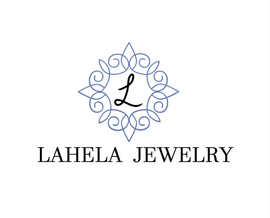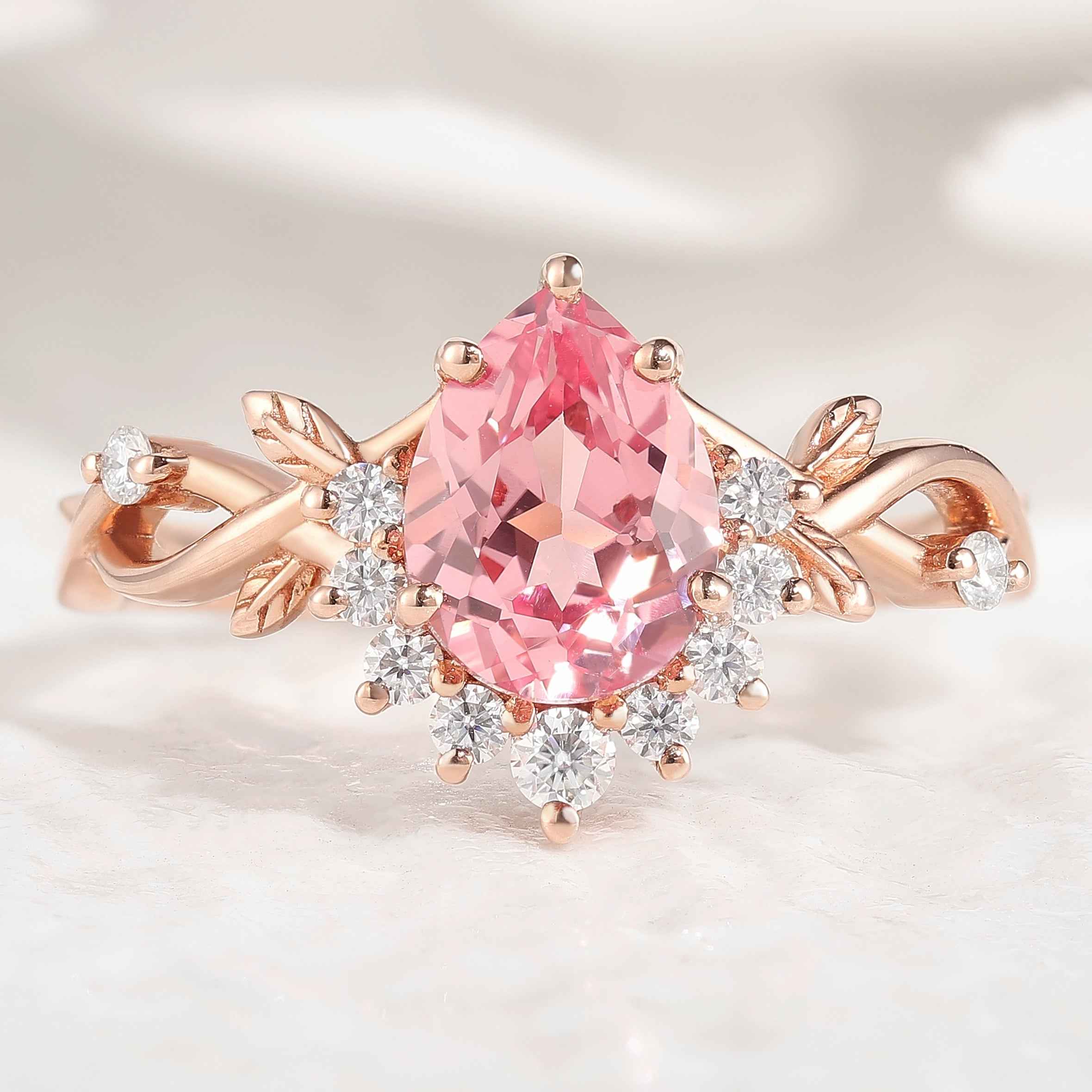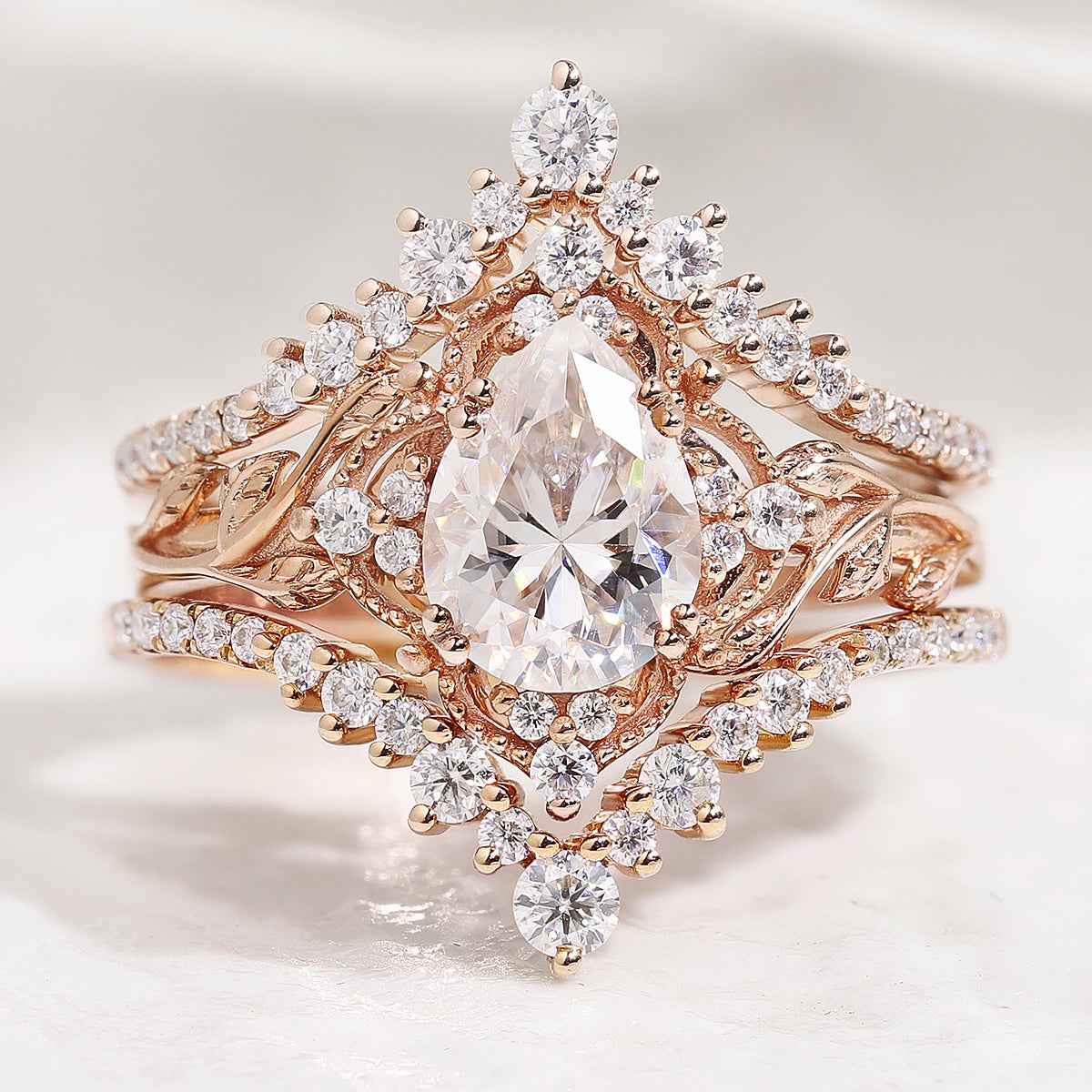Quick Answer
Lab diamonds are worth it when you want a larger stone for a limited budget, care about the environmental footprint, or would prefer guaranteed ethical origin. However, they're not a good option to invest in since they don't hold their value. They're great for daily fashion jewelry and also for engagement rings when resale value is not your top priority.
Lab-grown diamonds have become a popular option for natural diamonds in recent years, which has caused a lot of debate in the jewelry business. As more people and couples think about buying jewelry with these man-made gems, one question stays at the top of everyone's mind: are they really worth the money?

What Are Lab-Grown Diamonds?
First of all, let’s clarify what lab-grown diamonds are. Lab-grown diamonds, also known as synthetic or cultured diamonds, are created in specialized facilities using advanced technological processes that replicate the natural diamond formation conditions. These diamonds are chemically, physically, and optically identical to their mined counterparts, composed of pure carbon atoms arranged in a crystal structure.
Two main methods are used in their creation: High Pressure-High Temperature (HPHT) and Chemical Vapor Deposition (CVD).
- HPHT (High Pressure, High Temperature): Presses that reach 1.5 million PSI and 2,700°F imitate the conditions on Earth where diamonds are formed.
- CVD (Chemical Vapor Deposition): This process adds layers of carbon atoms to a diamond "seed" in a plasma cell, which makes the stones cleaner.
Both methods yield gems graded by the 4Cs (cut, color, clarity, carat) and certified by labs like GIA or IGI.

What Are the Advantages of Lab-Grown Diamonds?
The advanced technology behind HPHT and CVD for lab diamonds goes beyond scientific achievement. These innovative manufacturing procedures give diamond buyers many perks.
Save Big Without Compromising Quality
A 1-carat lab-grown diamond costs between $800 and $2500, while a real diamond costs between $2,000 and $6,000 or more. A $5,000 lab diamond could get you a 2-carat stone, but the same amount of money could only get you a 0.75-carat real diamond.

Better for Our Planet
Laboratory-grown diamonds have a smaller environmental impact than mined ones. Traditional diamond mining causes deforestation, soil erosion, and water pollution. Lab-grown diamonds disturb less land and use less water. Manufacturing does require a lot of energy, but many manufacturers are adopting renewable energy to reduce their environmental impact.
Perfect Diamonds, Made to Order
Precise lab control leads to fewer flaws and fancy colors that are hard to find in nature, like bright blue or pink.
No Ethical Worries
The conflict-free status of lab-grown diamonds is a major benefit. The Kimberley Process has improved the natural diamond business, but lab-grown diamonds erase concerns about conflict diamonds and unethical mining. Socially minded buyers can be certain that every stone's origin is traceable.
What Are the Drawbacks of Lab-Grown Diamonds?
These technology advancements make diamonds more accessible and eco-friendly, but they also present new buying issues.
Will They Keep Their Value?
The largest drawback of lab diamonds is their lower resale value. Natural diamonds tend to retain some value over the long term, but lab diamonds have declined in value more sharply. In part, this is because continuous technological advances make production even more efficient and inexpensive, leading market prices down.
The “Emotional Value” Gap
Some buyers feel that diamonds grown in the laboratory lack the romance and mystery of natural diamonds, which evolved over a period of millions of years. Traditional notions about diamonds being "rare" and "valuable" might make lab-produced stones less appealing for some use, particularly for engagement rings where tradition and symbolism play a role.
A New Market with an Uncertain Future
The market for cultured diamonds is relatively new. Prices have been decreasing as production gets more efficient, and long-term market stability is not clear. It is difficult to predict how these stones will be priced in the future.

Lab-Grown vs. Natural Diamonds: Key Differences Compared
These cons may worry shoppers, but they are only three factors in a complicated decision-making process. To help you find the perfect stone, let's compare lab-grown vs natural diamonds on all important elements, from cost and durability to emotional worth and investment potential.
| Feature | Lab-Grown Diamonds | Natural Diamonds |
| Initial Cost |
40-50% less expensive 1-carat stone: $800-$2,500 |
More expensive 1-carat stone: $2,000-$6,000+ |
| Physical Properties |
• Chemically identical to natural diamonds • Same hardness and sparkle |
• Chemically identical to lab-grown • Same hardness and sparkle |
| Origin |
• Created in labs in weeks • Controlled environment |
• Formed naturally over billions of years • Mined from the earth |
| Resale Value |
• Lower resale value • Prices likely to decrease over time |
• Better value retention • May appreciate over time |
| Environmental Impact |
• Smaller carbon footprint • No mining required • Uses more energy in production |
• Requires mining • Can cause soil erosion • Uses more water resources |
| Ethical Concerns |
• Fully traceable • Conflict-free guaranteed |
• May have ethical concerns • Kimberley Process certified |
| Availability |
• Readily available • Can be made to order • Consistent quality |
• Limited by natural supply • Each stone unique • Rarer in larger sizes |
| Color Options |
• Wide range of colors available • More consistent coloring |
• Natural colors more rare • Higher value for rare colors |
| Certification |
• Graded by same labs (GIA, IGI) • Marked as lab-grown |
• Graded by same labs • Comes with origin certification |
| Best For |
• Budget-conscious buyers • Larger stones • Environmental concerns • Modern jewelry |
• Investment purposes • Traditional value • Collector's items • Heritage pieces |
Quick Tips for Buyers:
- For Engagement Rings:
- Go lab-grown if you'd prefer a larger stone for your budget
- Choose natural if investment value is important to you
- For Fashion Jewelry:
- Lab-grown is excellent for trendy pieces
- Best for experimenting with different sizes and colors
- For Investment:
- Natural diamonds tend to be better for long-term value
- Think lab-grown for wear and enjoyment now rather than investing
- For Ethical Reasons:
- Lab-grown promises complete peace of mind
- Certified natural diamonds are also a moral option
FAQs About Lab Diamonds
Q1: Can lab-grown diamonds be used in antique or vintage-style jewelry?
Absolutely. Lab-grown diamonds look like natural ones, making them suitable for repairing heirlooms or creating vintage-inspired settings.
Q2: How do lab-grown diamonds behave under UV/LED light?
Similar to genuine diamonds! Both exhibit the same brilliance, fire, and scintillation under all lighting conditions. Fancy lab diamonds like blue or pink may fluoresce similarly to rare natural hues.
Q3: Can I add lab-grown diamonds to a natural diamond ring later?
Yes. Jewelers often blend both types. For instance, lab-grown pavé accents on a genuine diamond center stone won't influence durability or appearance.
Q4: Do lab diamonds yellow over time?
No. They're equally as stable as natural diamonds and won't discolor or fade.
Q5: Are lab diamonds flawless?
Not always—they can have inclusions, but they tend to be fewer than in natural diamonds.


